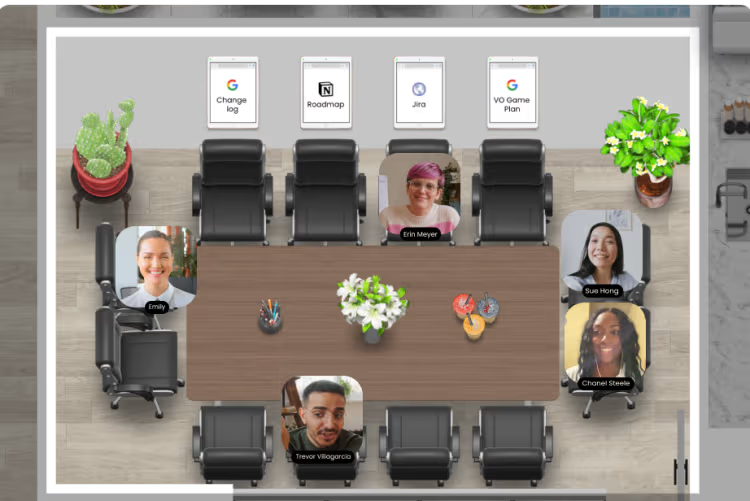Video Conferencing Best Practices for Engaging Remote Teams
Engaging remote teams through video conferencing is essential for maintaining productivity and team cohesion in a distributed work environment. Effective video conferencing practices can enhance communication, foster collaboration, and ensure that virtual meetings are as engaging and productive as in-person interactions. This article outlines best practices for video conferencing to help you effectively engage your remote team.

Establish Clear Objectives and Agendas
Best Practice: Before scheduling a video conference, define clear objectives and create a detailed agenda. Share the agenda with participants ahead of time to allow them to prepare and contribute meaningfully.
Explanation: Setting clear goals and providing a structured agenda helps keep meetings focused and ensures that all relevant topics are covered. It also allows participants to come prepared with any necessary information or questions.
Foster an Inclusive Meeting Environment
Best Practice: Create an inclusive environment where all team members feel comfortable participating. Encourage active involvement from everyone by inviting input and feedback throughout the meeting.
Explanation: Inclusivity promotes engagement and ensures that diverse perspectives are heard. Use features like the “raise hand” function or chat to give everyone an opportunity to contribute. Avoid interrupting participants and be mindful of time zones to accommodate all team members.
Utilize Interactive Features
Best Practice: Take advantage of interactive features available in video conferencing tools, such as polls, breakout rooms, and collaborative whiteboards.
Explanation: Interactive features can make meetings more dynamic and engaging. Polls can gauge opinions or make decisions quickly, breakout rooms facilitate focused discussions, and whiteboards allow for real-time brainstorming and idea sharing.
Maintain a Professional and Distraction-Free Setting
Best Practice: Ensure that your video and audio setup is professional and free of distractions. Choose a quiet, well-lit space for meetings and use a clean, professional background.
Explanation: A professional setting helps convey respect for the meeting and its participants. Minimizing background noise and visual distractions maintains focus and ensures that all participants can engage without interruptions.
Encourage Active Participation
Best Practice: Actively encourage participation from all team members. Ask questions, solicit feedback, and invite individuals to share their thoughts or updates.
Explanation: Active participation fosters engagement and collaboration. It also helps ensure that all voices are heard and valued, which can lead to more comprehensive discussions and better decision-making.
Keep Meetings Focused and Efficient
Best Practice: Stick to the agenda and manage time effectively during the meeting. Avoid veering off-topic and ensure that discussions are productive.
Explanation: Staying focused on the agenda helps prevent meetings from dragging on and keeps participants engaged. Efficient time management ensures that all important topics are covered without wasting time on unrelated issues.
Use Visual Aids and Collaborative Tools
Best Practice: Incorporate visual aids, such as slides or infographics, and utilize collaborative tools, such as shared documents or project management boards.
Explanation: Visual aids can enhance understanding and retention of information, while collaborative tools facilitate real-time contributions and updates. These elements help keep participants engaged and aligned with the meeting’s objectives.
Address Technical Issues Proactively
Best Practice: Prepare for potential technical issues by testing equipment and connections before the meeting begins. Have a backup plan, such as a phone dial-in option, in case of connectivity problems.
Explanation: Addressing technical issues proactively minimizes disruptions and helps maintain the flow of the meeting. Ensuring that all participants are aware of alternative ways to join the meeting can prevent delays and frustrations.
Follow Up with Action Items and Feedback
Best Practice: After the meeting, send out a summary of key points and action items. Request feedback from participants to identify areas for improvement.
Explanation: Providing a summary and clear action items ensures that everyone is on the same page and knows their responsibilities. Gathering feedback helps improve future meetings and addresses any concerns or suggestions from the team.
Conclusion
Engaging remote teams through video conferencing requires a combination of effective planning, inclusive practices, and technical preparedness. By establishing clear objectives, fostering inclusivity, utilizing interactive features, maintaining professionalism, and managing time efficiently, you can create productive and engaging virtual meetings. Implementing these best practices will help ensure that your remote team remains connected, collaborative, and motivated.



